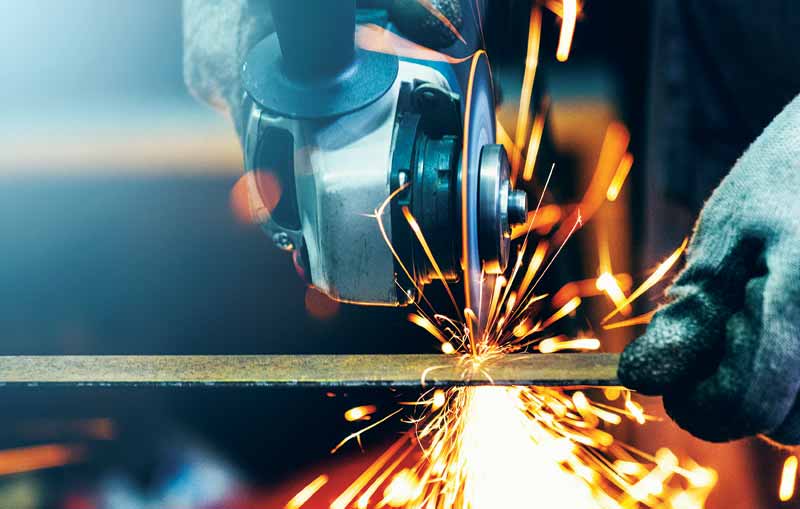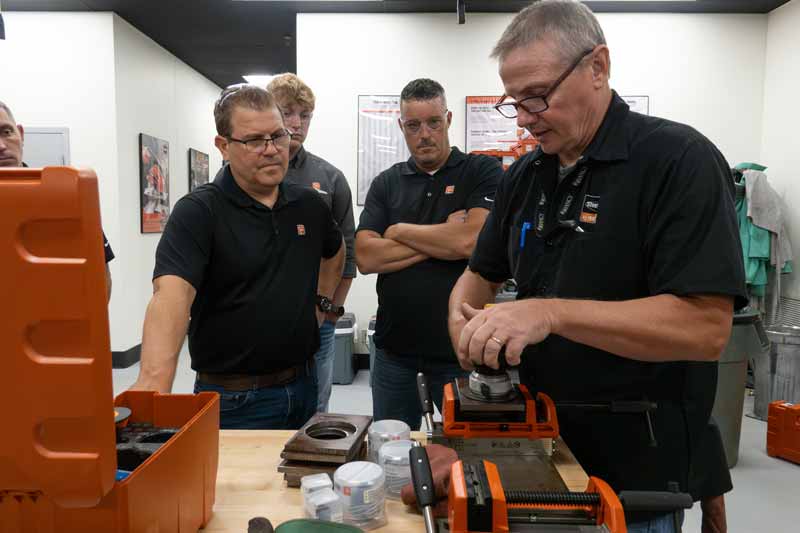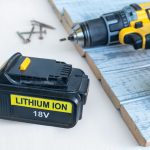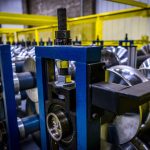
Increasing productivity and profits—aside from safety, these are the two most important goals on any job site. Even if tackling a home project, contractors are looking to do it quickly, correctly, and in a cost-effective way.
It stands to reason that the best, most impactful innovations in the power tool and metalworking industries have significantly boosted productivity and profits. For some power tools, the key innovation to push this goal forward has been a brushless motor.
Read on to understand how a brushless motor can make a real difference in limiting downtime on job sites.
How do brushed motors work?
To understand the impact brushless motors have in the metalworking field, it is good first to understand how traditional brushed motors work. According to Popular Mechanics, a traditional brushed motor is made up of four basic parts: carbon rings, a ring of magnets, an armature, and a commutator. The magnets and brushes remain stationary while the armature and commutator rotate on the moto shaft within the magnets.
When the motor is energized, a charge travels from the battery, through the brushes, and into the commutator. The brushes are spring-loaded to maintain physical contact with the commutator. The commutator then passes the charge onto the armature, which is made up of copper windings. The charge magnetizes the windings and pushes against the stationary ring of magnets surrounding it, forcing the armature assembly to spin. The spin does not stop until the charge from the battery stops.
How do brushless motors work?
In contrast, a brushless motor does not have the brushes or commutator, and the positions of the magnets and copper windings driving the armature are reversed. A small circuit board coordinates the energy delivery to the windings instead of the brushes and commutator.
How do brushless motors boost productivity?

Two of the greatest time wasters on a project are tool maintenance and repair.
Tool maintenance can also unnecessarily drain critical time and resources, and the endless cycle of replacing cheap tools that break easily or having to clean a brushed motor contributes to wasted time and lost profitability.
Brushless motors reduce the need for constant maintenance upkeep. According to FEIN Power Tools, a user can get 100 more hours of run time than using traditional brushed motors. This time gap translates to, on average, about $200 or $250 in savings on repairs and costs associated with unnecessary downtime.
For example, brushless motors on an angle grinder provide consistent RPM. Using the brushless motor also means there are far fewer opportunities for inefficiencies or stuttering rhythm when using the grinder. In addition, the user does not need to push down as hard on the tool—putting unnecessary wear on it—to maintain a constant RPM. On average, using a brushless motor on an angle grinder allows the user to remove about two and a half times more material than a brushed motor would remove.
Power tools on job sites need the endurance to work through an 8- to 10-hour shift, which is where corded power tools with brushless motors are particularly valuable. For a brushless motor on a cordless tool, the user needs to change the battery repeatedly. By being connected to a constant power supply, workers enjoy the whole benefit of the brushless motor—which is consistent speed and power throughout the entire job.
Why is finding the right tool so critical?
A common mistake on many job sites is to assume only a limited number of tools can be adapted for nearly endless purposes. However, in the same way it is important to reach for a brushless, corded power tool for certain purposes, productivity and profits will increase when users find the right type of tool for each specific job.
The purchasing of high-quality power tools, such as well-made corded drills with brushless motors, reduces the risk of needing tool repair, which harms overall performance.
When sticking only with general-purpose tools, the user has to finesse the tool or use it slightly differently to make it work for what they would like to do, as opposed to using a high-quality tool designed for a specific purpose.
When on a job, whether it be repairing a scratched elevator door damaged from being bumped by luggage or a scratched commercial or residential refrigerator, it is far more effective for time and budget to have a surface finishing tool on hand. A tool specifically designed to blend the stainless surface and remove the scratch offers time and cost savings. The other options—using scratched material or scrapping it and sending it out for new material—are less than ideal and potentially cause commercial projects to fail inspections or create the headache of change orders or extended and expensive punch list remediations.
Similar situations may arise when a user is looking to bevel or remove material from an edge to create a gradual slope. Some may try to be creative with existing tools, like a flame torch or angle grinder, but having a beveler in the toolbox means the results will be cleaner and more efficient.
Investing in high-quality tools with specific purposes means investing in smoother job sites. Choosing to find the right tools for the right jobs will save headaches, time, and money—and create more successful results.
Steve Vincent has been employed by FEIN Power Tools and Jancy Engineering for 25 years, working in every aspect of the business from repairs to product management. He currently serves as a product manager at FEIN Power Tools.





